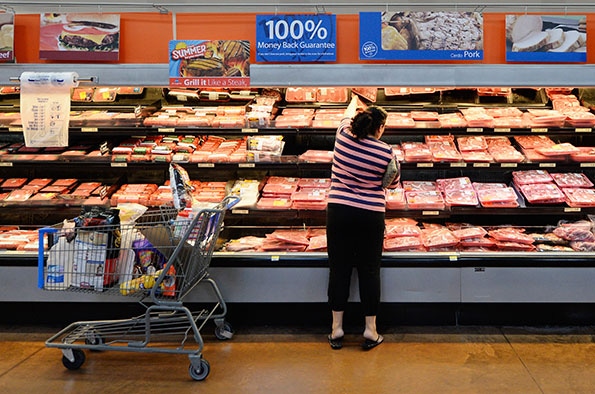It has been 32 years since standards for grades of pork carcasses were last updated, and not that these standards are necessarily broke, but they are quite outdated.

If it ain’t broke, don’t fix it goes the adage. Sometimes, though something is not necessarily broken, it may need a little tinkering, a tune-up if you will.
Such is the case with the USDA Agricultural Marketing Service’s decision to revise U.S. standards for grades of pork carcasses. It has been 32 years since the standards were last updated, and not that these standards are necessarily broke, but they are quite outdated.
There are a lot of 1985 autos still on the road, but good luck pushing a button on the dash to help you navigate on a trip. That Cutlass may be real nice, and still get you around, but it was not equipped from the factory with a GPS device.
The same can be said of the pork grade standards currently on the books: yes, technically they do provide a framework of grading pork, but they do not necessarily help get the consumer where they want to go to have a fulfilling pork experience.
Just as cars have changed since 1985, so has the U.S. pork product and U.S. pork processors, but maybe more importantly, so have American consumers. Gone are the days of the U.S. pork industry giving the consumer the pork that we are raising on our farms and processing in our plants. Now, consumers want to know how their food is being raised, and they are having more of a say in the product we give them.
Consumers want to have a quality product, and hog producers want that too. What we need to be able to provide consumer is a consistent quality product, and revised grading standards can help along those lines.
“We know consumers all like different cuts of meat,” Steve Larsen, National Pork Board assistant vice president of science and technology, says in an article in the June National Hog Farmer issue. “Some like the lighter-colored pork chop, some like the darker chop, and some like it in between. … We just want to be sure that when someone finds what they like, that they are able to consistently get that product. There is a home for each type of quality.”
On Monday, USDA AMS announced that public comment would be sought on the proposed grading standards revisions. The NPB says in a statement, “To grow demand, our industry needs to better define what quality looks like and maintain our focus on developing a consistent eating experience. America’s pig farmers produce a flavorful product, and the Pork Checkoff’s long-term research studies have demonstrated how to improve upon it. The pork loin is the primal that most often suffers from a quality challenge and consequently faces chronic low prices. Consumer research suggests a more consistent eating experience with the loin — supported by a balance of the proper cut name, the ideal end-point cooking temperature and the quality attributes of color and marbling — will create higher consumer value. Better understanding these attributes will only serve to increase pork consumption in the long term.”
You have until Dec. 22 to comment on the revisions, either online at Regulations.gov, submitted by email to [email protected], or sent to Pork Carcass Revisions, Standardization Branch, Quality Assessment Division; Livestock Poultry and Seed Program, AMS, USDA; 1400 Independence Ave., SW.; Room 3932-S, STOP 0258; Washington, D.C. 20250-0258. Comments received will be posted without change, including any personal information provided. All comments should reference the docket number (AMS-LPS-17-0046), the date of submission and the page number of the issue of the Federal Register. The proposed revision appeared in the Oct. 23 Federal Register.
Pork producers, step up to be heard on how you feel about these revised standards, to help steer quality pork into the future. Because if the past is any indication, you’ll be stuck driving this model for quite some time.
About the Author(s)
You May Also Like



